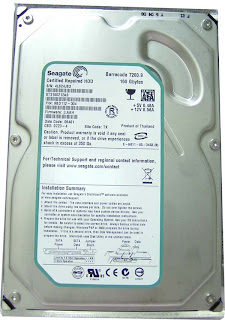
Monday, August 30, 2010
Monday, August 23, 2010
Windows Server Hacks: Remotely Enable Remote Desktop
Remote Desktop is a cool feature of Windows Server 2003 that lets you remotely log on to and work at a machine as if you were seated at the local console (in Windows 2000 Advanced Server, this feature was called Terminal Services in Remote Administration Mode). Remote Desktop can be a lifesaver for fixing problems on servers at remote sites, but what if you forgot to enable the feature before you shipped the server out to Kalamazoo? Enabling Remote Desktop is easy if the server is in front of you: just log on as an administrator, open System in Control Panel, select the Remote tab, and under Remote Desktop select the checkbox labeled "Allow users to connect remotely to this computer." Unfortunately, you can't use the System utility to enable Remote Desktop on a remote machine, though you can access some properties pages of System using Computer Management by first connecting the console to a remote computer, then right-clicking on the root node and selecting Properties. Unfortunately, as you can see in Figure 1 below, the Remote tab is not available when you access System properties this way on a remote machine (here named SRV220).
Figure 1. System properties for a remote machine does not have Remote tab.
Fortunately, there's a workaround. Sit down at your desk and log on to your Windows XP workstation using your administrator credentials and start Registry Editor by Start --> Run --> regedit --> OK. Then select the Connect Network Registry option under the File menu (Figure 2).
Figure 2. Connecting to the Registry on a remote machine.
This opens the Select Computer search box. Either browse Active Directory to locate the remote server, or type its name in the textbox (Figure 3).
Figure 3. Connecting to the Registry on a remote server named SRV220.
Click OK and a node will be displayed in Registry Editor for the remote machine (Figure 4).
Figure 4. HKLM and HKU hives on SRV220.
Now browse HKLM on SRV to find the following Registry key (Figure 5).
HKLM\SYSTEM\CurrentControlSet\Control\Terminal Server
Figure 5. Registry key for Terminal Server on remote machine.
Under the Terminal Server key, you'll find a REG_DWORD value named fDenyTSConnection. Double-click on that value to open the Edit DWORD Value box and change the value data from 1 (Remote Desktop disabled) to 0 (Remote Desktop enabled), as in Figure 6 below.
Figure 6. Set fDenyTSConnections to 0 to enable Remote Desktop on SRV220.
The remote machine needs to be rebooted for the change to take effect, so open a command prompt and type the following command:
shutdown -m \\srv220 -rAfter the remote machine reboots, Remote Desktop should be enabled on it. To test this from your workstation, open Start --> All Programs --> Accessories --> Communications --> Remote Desktop Connection, enter the name of the remote server in the Remote Desktop Connection logon box, supply your administrator password when prompted, and you're in.
Mitch Tulloch is the author of Windows 2000 Administration in a Nutshell, Windows Server 2003 in a Nutshell, and Windows Server Hacks.
Saturday, August 21, 2010
Thursday, August 19, 2010
Using CACLS with Windows XP Home Edition Using the NTFS File System

Using CACLS with Windows XP Home Edition Using the NTFS File System
In Windows XP Home Edition with the NTFS file system, you can also use the Cacls tool, which is a command-line tool, to display or modify file or folder access control lists (ACLs). For more information about the Cacls tool, including usage and switches, search the Help and Support Center for "cacls."- Click Start, click Run, type cmd, and then click OK.
- Make sure that you are in the root folder of the partition for which you want to gain access to the System Volume Information folder. For example, to gain access the C:\System Volume Information folder, make sure that you are in the root folder of drive C (at a "C:\" prompt).
- Type the following line, and then press ENTER: cacls "driveletter:\System Volume Information" /E /G username:FMake sure to type the quotation marks as indicated. This command adds the specified user to the folder with Full Control permissions.
- Double-click the System Volume Information folder in the root folder to open it.
- If you need to remove the permissions after troubleshooting, type the following line at a command prompt: cacls "driveletter:\System Volume Information" /E /R usernameThis command removes all permissions for the specified user.
The following steps also work if you restart the computer to Safe mode because simple file sharing is automatically turned off when you run the computer in Safe mode.
- Open My Computer, right-click the System Volume Information folder, and then click Properties.
- Click the Security tab.
- Click Add, and then type the name of the user to whom you want to give access to the folder. Typically, this is the account with which you are logged on.
- Click OK, and then click OK again.
- Double-click the System Volume Information folder to open it.
Windows XP Professional using the NTFS File System on a Workgroup or Standalone Computer
Windows XP Professional using the NTFS File System on a Workgroup or Standalone Computer
- Click Start, and then click My Computer.
- On the Tools menu, click Folder Options.
- On the View tab, click Show hidden files and folders.
- Clear the Hide protected operating system files (Recommended) check box. Click Yes when you are prompted to confirm the change.
- Clear the Use simple file sharing (Recommended) check box.
- Click OK.
- Right-click the System Volume Information folder in the root folder, and then click Properties.
- Click the Security tab.
- Click Add, and then type the name of the user to whom you want to give access to the folder. Typically, this is the account with which you are logged on. Click OK, and then click OK again.
- Double-click the System Volume Information folder in the root folder to open it.
NOTE: The System Volume Information folder is now accessible in normal mode to users of Windows XP Home Edition.
Windows XP Professional Using the NTFS File System on a Domain

Windows XP Professional Using the NTFS File System on a Domain
- Click Start, and then click My Computer.
- On the Tools menu, click Folder Options.
- On the View tab, click Show hidden files and folders.
- Clear the Hide protected operating system files (Recommended) check box. Click Yes when you are prompted to confirm the change.
- Click OK.
- Right-click the System Volume Information folder in the root folder, and then click Sharing and Security.
- Click the Security tab.
- Click Add, and then type the name of the user to whom you want to give access to the folder. Choose the account location if appropriate (either local or from the domain). Typically, this is the account with which you are logged on. Click OK, and then click OK again.
- Double-click the System Volume Information folder in the root folder to open it.
Microsoft Windows XP Professional or Windows XP Home Edition Using the FAT32 File System

Microsoft Windows XP Professional or Windows XP Home Edition Using the FAT32 File System
- Click Start, and then click My Computer.
- On the Tools menu, click Folder Options.
- On the View tab, click Show hidden files and folders.
- Clear the Hide protected operating system files (Recommended) check box. Click Yes when you are prompted to confirm the change.
- Click OK.
- Double-click the System Volume Information folder in the root folder to open it.










